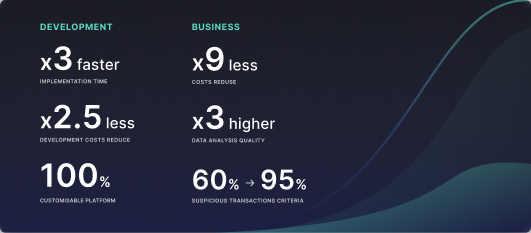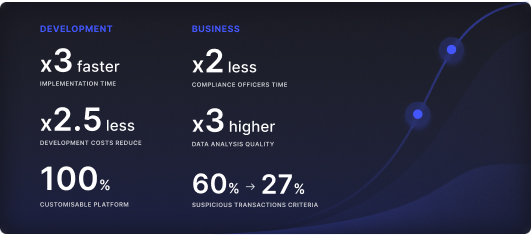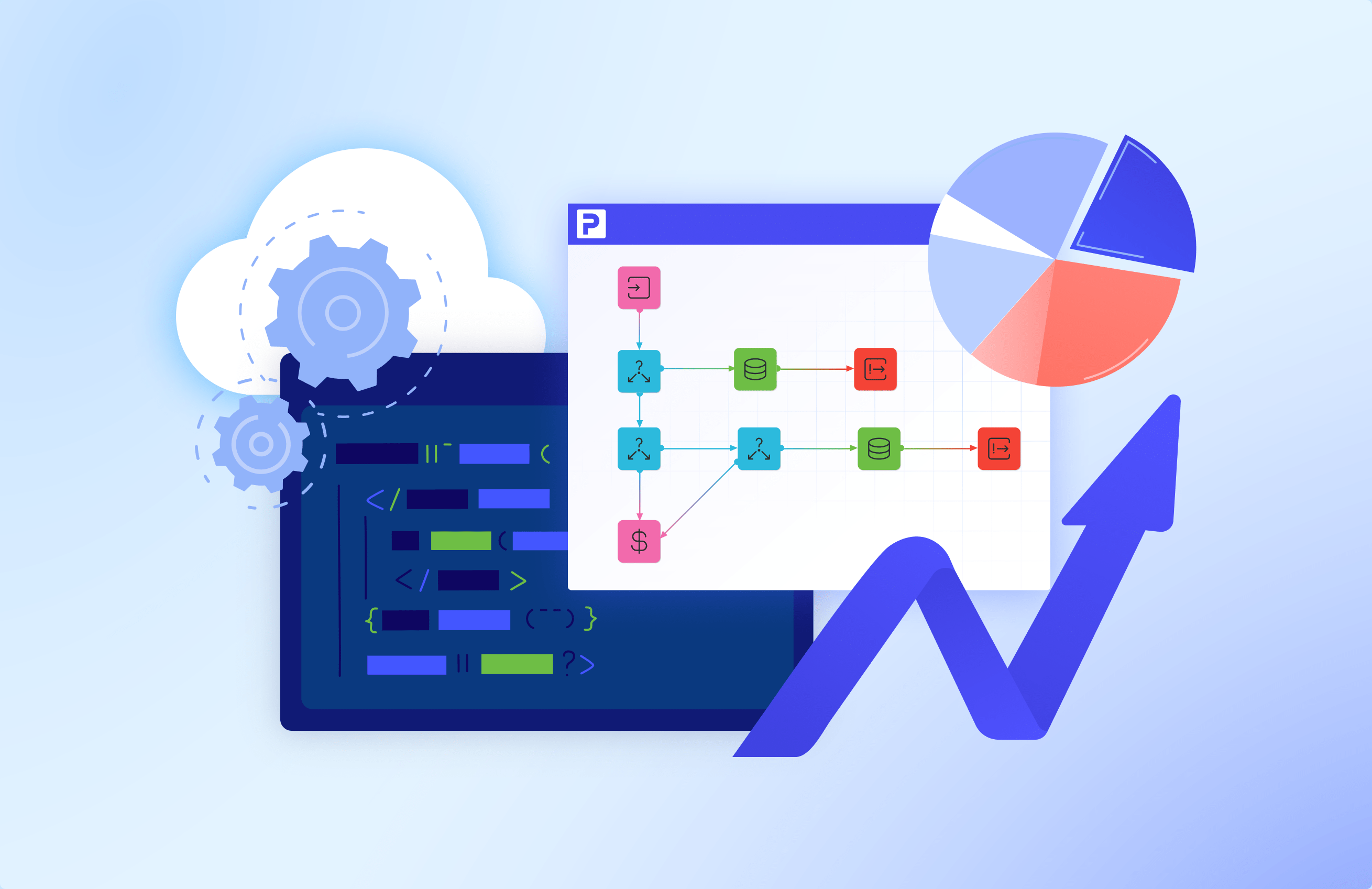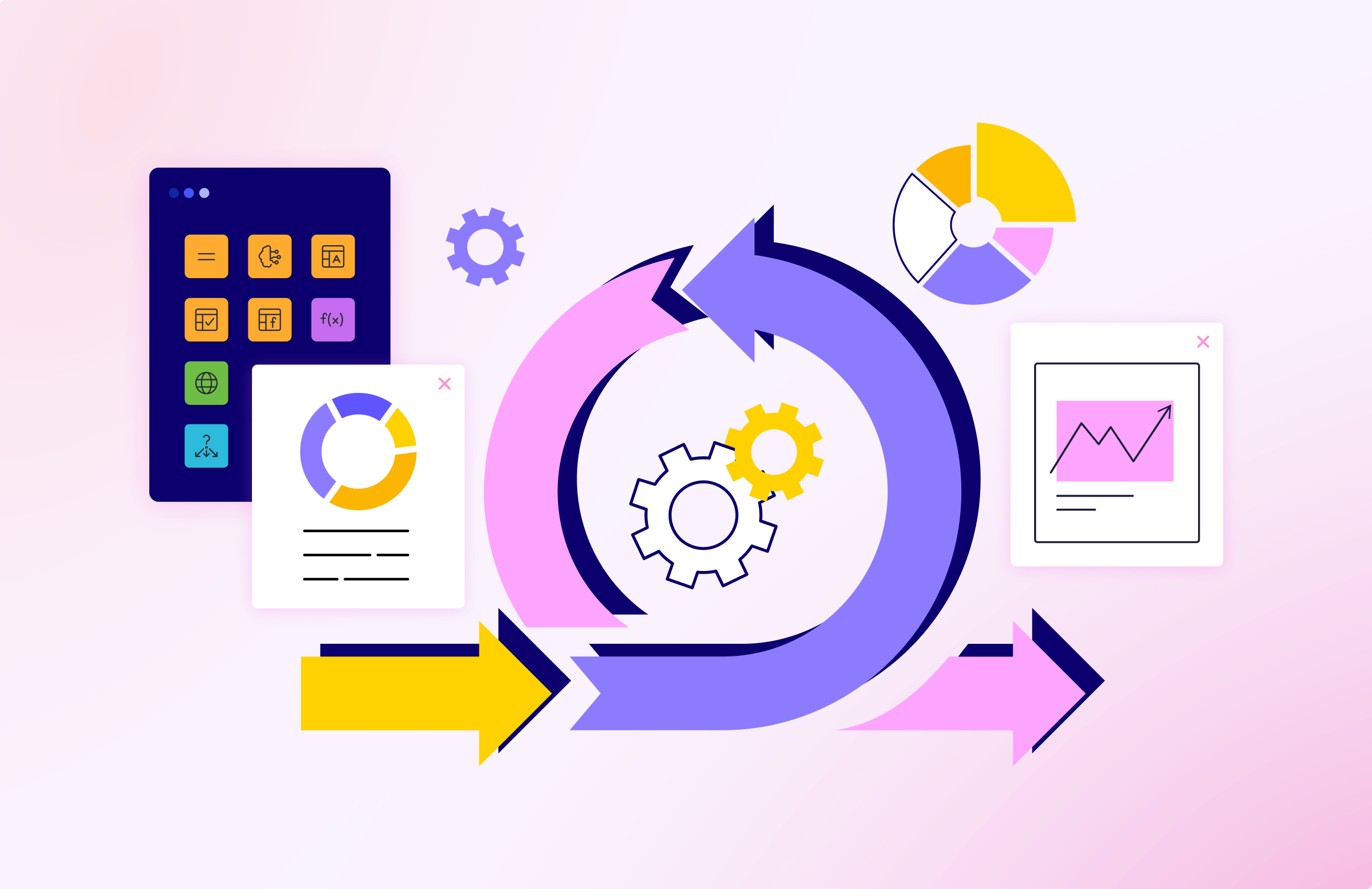Digital Transformation: How Process Automation Drives Organizational Change


During this decade, digital transformation has been a hot topic and one of the top goals of thousands of businesses. No matter an SMB or a large enterprise, the immense positive effects on operational efficiency, customer satisfaction, and flexibility are the same. The strong tendency of entrepreneurs to upgrade their businesses with modern technologies is reflected in the Meticulous Research study that predicts the digital transformation market to reach $3.3 trillion by 2030.
And of all the digital transformation technologies, automation is the most impactful and desired one. As of today, an average business owner can automate up to 45% of its business operations which leads to a substantial increase in customer acquisition and overall team productivity. Automation takes load from employees across all the business departments and allows customers to get more personalized service without delay.
Modern automation technologies are the key to successful digital transformation and business growth. It broadens the list of technologies you can use in your business activities and allows you to manage your IT environment more efficiently. But how to transform your business faster and spend less budget on it? You will find the answer further in this article.
Definition of Digital Transformation
Let’s start with the basics and define digital transformation itself as well as the characteristic traits of this process.
Digital transformation (DT) is the ongoing process of implementing the latest technologies into business processes to enhance team productivity and decision-making.
DT is a never-ending process that requires your business technical executive to keep an eye on the state-of-art technologies to upgrade your digital environment on time and keep up with competitors. The best DT solutions are flexible so you can easily adapt them to the changing requirements and implement changes faster and cheaper as the business scales.
Then, every step of the digital transformation process is closely tied to your business strategy and size. Any software you implement should reflect your business objectives and scale. This applies to data volumes, number of users, transactions, etc. The ideal solution won’t include any obsolete features that hinder the system’s productivity and, in the case of COTS software, adds to the IT costs.
DT technologies inspire you to adopt an innovative attitude to business processes which requires constant rethinking of your customer relations, internal processes, and staff training. To leverage the advanced technologies, like cloud computing, upper management as well as frontline employees need to understand how to operate with the new tools effectively. At the same time, you can alleviate the IT management and training burden by employing an ITSM solution with an easy-to-use interface. Such solutions allow the running of multiple processes from one interface and, the development of rule-based automation apps for different purposes (customer onboarding, risk-management checks, etc.)
The Place of Automation Technologies in the Digital Transformation Process
As the recent Comunda research shows, 97% of IT managers see process automation as the basis for their companies’ digital transformation. Automation technologies can give a boost to every digital activity you apply to your business during the digital transformation. Automation reduces operational costs and streamlines workflows, allowing your system to deliver more value for the business in a shorter time span.
How automation does do the trick? In essence, automated processes enhance the opportunities you acquire with different digital transformation technologies. It minimizes or eliminates human involvement in performing routine tasks, risk management procedures, and data management. Automated apps complete business tasks reliably and consistently, taking several times less time than manual systems. In addition, automation technologies improve the business system connectivity, making different apps work together cohesively.
Let’s suppose you start using a platform that is able to connect your business apps together and create rule-based automated processes for different tasks related to them. The first thing you will notice is that your employees stop wasting time on irrelevant tasks like cross-department data exchange, service compliance checks, and other repetitive tasks. As a consequence, you’ll have your employees doing the real work that drives the business to develop even more.
How Automation Drives the Development of Your Organization?
Makes businesses more productive and effective
Business productivity and profitability enhancement is a central aim of digital transformation and automation technologies are the basis of team productivity in regards to new digital tools. Automation technologies participate in routine activities and eliminate service errors. Automated routines get done fast so that both customers and employees see the results faster.
In fact, productivity is the most valued benefit of digital transformation. Automation allows employees to focus on the creative part of their work and generate more fresh and effective ideas. Performing more valued and fulfilling tasks, business teams get more motivation and really engage in the working process. McKinsey reported a 30% to 35% run-rate efficiency in organizations that automated 50% to 72% of business operations across various industries.
For instance, when you integrate your apps with databases and leverage easy-to-use ITSM to manage the processes, your team won’t waste time entering and re-entering data manually. Besides, it will become much easier to manage and create automated processes on the go. Creating automation apps and scaling your business becomes more available with ITSM enabled with a low-code engine, like ProcessMIX.
Increaseы Customer Satisfaction Level
Business process automation technologies allow your customers to reach your product or service faster and easier. In addition, customers feel less frustrated when making orders or payments. With automation, customers enjoy better service personalisation having the preferred products in suggestions based on residence area. As a result of customer-related process automation, every client feels seen, valued, and appreciated.
What’s more, the employees feel less tired due to the automated routine processes and are capable of providing better customer care along with a seamless user experience. It’s hard for customer care specialists to keep high spirits when they are tired of tedious manual tasks. Thus, automated technologies free them from routine tasks and allow them to engage more with the clients.
Excellent customer service ensured by automation technologies boosts sales and gives an upper hand over competitors in the market. Automated processes enhance AI-supported customer concerns analysis, provide bots to answer service FAQs, and serve as a tool for effective multichannel order management. Eventually, you will increase response speed, make your customers satisfied, and personalize their experiences.
Сuts labor-related costs
You can save businesses hundreds of labor hours and money, making tasks like data management, approval, financial operations, and data entry automated. Also, automation technologies improve business productivity and inventory. With automation, a business gets rid of unnecessary expenses, enhances cash flow, improves budgetary control, and reduces overhead.
Automation brings even more benefits to international businesses allowing teams from different countries and continents to be managed from a central hub. It enables the business to align corporate resources and reduce costs providing the benefits By allowing you to remotely manage decentralised global teams from a central hub and preserving corporate resources, automation also helps to reduce your business costs. You can operate with fewer employees and lower rewards and bonuses since you do not need humans to do specified jobs.
Improves security and compliance
Automation implementation was driven mostly by easier compliance and improved security, according to 47% of organisations. Two primary concerns for modern organisations focusing on digital transformation are cybersecurity and adhering to stringent modern rules, particularly in cases where regulations are changed on a regular basis.
Maintaining compliance requires a lot of data, thus automating these jobs streamlines the process and reduces its laboriousness. Because you can identify policy, account, and configuration infractions, it streamlines compliance procedures. You can rapidly identify dangers by keeping an eye on common usage trends. Prior to a breach, find weaknesses and take proactive measures to address them.
Improves
Your business can increase operations with fewer resources if its digital automation platform is in line with its transformation goals. You can test automation solutions on a small number of projects before moving to a unified, enterprise-wide approach to break down operational silos and increase growth.
Because process automation lowers errors, it improves consistency and efficiency in company operations. It facilitates cross-functional interaction by encouraging teamwork and bridging gaps across distinct corporate teams. It also exposes your staff to a range of roles, which fosters an environment that is conducive to innovation.
By enhancing visibility into corporate operations and revealing inefficiencies, automation solutions provide insight and clarity into workflows and processes.
How to Accelerate Digital Transformation with Automation
Know Why You Are Doing It
The first step in undergoing a digital transformation is recognising why you want to digitise. Describe your company’s requirements and objectives, then take it from there. A solid business case and a distinct sense of perceived business value are also necessary. Having a clear path to follow is much easier when you know why you are changing.
Make a Roadmap for the Digital Transformation
The first step in your digital transformation journey is to evaluate the efficiency of the current system and process. Next, create a clear digital transformation plan that indicates your goals and your intended route. Assess the areas that need modernisation more and leverage corresponding solutions.
Establish an Innovative Culture
Digitization cannot be successful without a change in internal culture. Establish an atmosphere that encourages experimentation and creative thinking amongst your employees. Encourage teams from across the organisation to adopt a mentality that helps them learn new tools and adapt to the more digitised processes. To foster the culture of innovation even more, let your staff make errors and grow from them.
Constantly Train Your Employees
By constantly upskilling your employees, you can make sure that your team has the digital know-how to lead the process of digital transformation. You have the option of creating a team from the start or bringing in current staff. Employees can acquire critical digital literacy skills through upskilling.
Find the right technology
The right technology guarantees a successful outcome whether you’re revamping applications, upgrading processes, or creating a new digital system. Select technology based on your budget and business needs. Some digital transformation technologies include cloud platforms, artificial intelligence, and machine learning.
Use Agile Methodology
Digital ecosystems are dynamic, so it’s important to regularly review your plan considering new internal and external influences. Any digital transformation strategy must allow your business to quickly pivot and adapt in order to address issues as they arise. Adopting an agile model necessitates cooperation, adaptation, transparency, and change.
Adopt, Scale, and Transform
Make the most of your accomplishments to foster cooperation and momentum for the upcoming actions. Determine how to scale your organization’s digital transformation so that it can keep expanding. Think about implementing comparable tactics in several places and integrating more technology.
Accelerate Your Digital Transformation with ProcessMIX
ProcessMIX is a converged platform with low-code engine, enhanced CI/CD pipeline, automated testing tools, and middleware capabilities. The platform will not only allow you to create software three times faster but also make it easy to integrate the new software with your existing software environment.

ProcessMIX offers a set of pre-made functionalities and software templates that you can adjust to your business needs. If you seek to create a more sophisticated solution, your professional developer would enjoy working with ProcessMIX as it allows you to customize without limits and integrate the code with any development environment of their choice.
Try the ProcessMIX Demo for free and see how it can make your digital transformation journey hassle-free and fast.
 Visual Development
Visual Development Assignment of risk level and customer category within KYC processes at customer onboarding
Assignment of risk level and customer category within KYC processes at customer onboarding Cross-Sell Offer Calculation for the 12M Client Base
Cross-Sell Offer Calculation for the 12M Client Base

